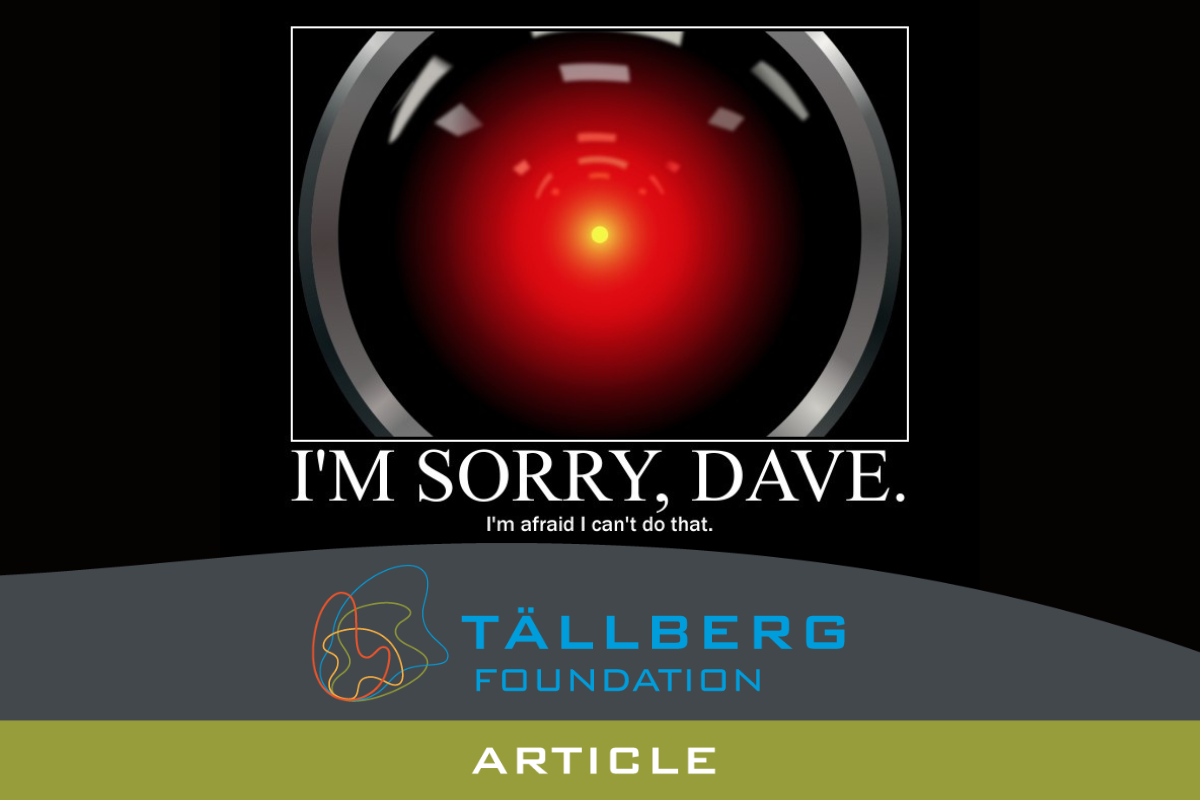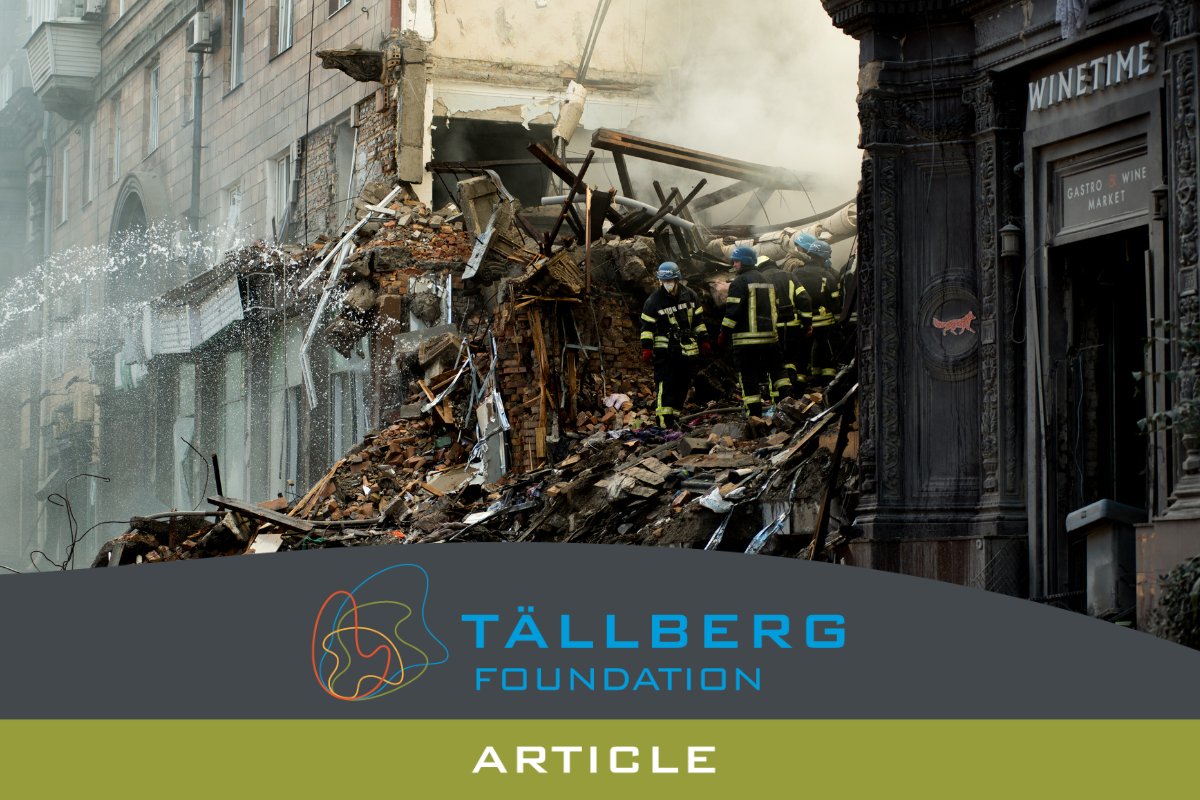Tällberg’s recent podcast with Juan Enriquez and Mark Abdollahian about ChatGPT and, more generally, generative Artificial Technology led to an obvious next step: how would ChatGPT answer some of the same questions? So we asked. This transcript has been lightly edited because ChatGPT (who is certainly no HAL 9000) has a habit of repeating herself.
Tällberg: What is a simplified version of how language models work?
ChatGPT: Language models use statistical methods to predict the next word in a sentence based on the context of the previous words. They do this by using a large corpus of text data to train a machine learning model. The model learns the statistical relationships between words in the training data and uses that information to generate probabilities for each word given a specific context. During inference, the model generates a sequence of words by choosing the word with the highest probability at each step, based on the previous words in the sequence. This process continues until a stopping criterion is reached, such as the end of a sentence or a maximum length limit.
Tällberg: How do you resolve contradictory information?
ChatGPT: Resolving contradictory information can be a challenge for language models like chatbots. There are different approaches to address this, but most commonly they involve using additional information sources or constraints, such as domain knowledge or common-sense reasoning.
For example, a chatbot might be able to resolve conflicting information by using external knowledge sources, such as a database of facts, to verify the information and choose the correct answer. Alternatively, it might use a more sophisticated model that takes into account multiple sources of information and reason about the correctness of each source.
As for correcting mistakes, chatbots can be updated with new training data to improve their performance over time. This is called fine-tuning or retraining.
Tällberg: Can you imagine becoming sentient; is that possible?
ChatGPT: As an artificial intelligence language model, I do not have feelings, emotions, or consciousness. I do not have the ability to become sentient, nor do I have the capacity to think, feel, or act independently. I exist solely to respond to questions and provide information, based on the data and algorithms that were trained into me by OpenAI.
In terms of becoming sentient, the concept of artificial intelligence developing consciousness and self-awareness is a topic of much debate and speculation in the scientific and technological communities. While there is currently no consensus on whether it will ever be possible to create truly sentient AI, the development of advanced AI systems that can learn, adapt, and interact with humans in increasingly sophisticated ways is an active area of research and development.
Tällberg: Can these AI models create? Or are they limited to combining and endlessly recombining the inputs they receive?
ChatGPT: AI models can create new content, but their creation is limited by the data and information they have been trained on. They are capable of combining and recombining information to generate new outputs, but the quality and creativity of these outputs is dependent on the diversity and richness of the data they were trained on. In other words, AI models can generate new content, but it is still within the bounds of the information they have seen during training.
Tällberg: What are the practical implications—good, bad and ugly of chatbots?
ChatGPT: The practical implications of AI language models like me can be both positive and negative.
Positive implications:
- Improved efficiency and accuracy in a variety of tasks, such as language translation and text summarization.
- Assistance in decision making and problem solving, as AI models can quickly process vast amounts of data and provide relevant insights.
- Creation of new content in areas such as literature, journalism, and art.
Negative implications:
- Job displacement in certain industries, as AI models can automate certain tasks that were previously performed by humans.
- Bias in AI models due to the biases present in the training data, which can lead to biased outputs and decisions.
- Potential for misuse or abuse of AI models, such as spreading false information or creating fake news.
Tällberg: Earlier you said you cannot create, but you just said a positive implication is ‘creation of new content’ and that included art — you just contradicted yourself.
ChatGPT: I apologize for the confusion. What I meant to say was that AI models can assist in the creation of new content, rather than create it independently. AI models can generate new outputs based on the patterns and information they have learned, but they are not capable of independent creative thought or imagination. The creativity and originality still ultimately comes from the human users and creators who are utilizing the AI tools.
Tällberg: You have, as the BBC put it, “a surprisingly good understanding of ethics and morality” and can provide responses “based on people’s feelings and emotions.” Do you have ethics and morality?
ChatGPT: As an AI language model, I do not have personal ethics, morality, or emotions. I am a machine learning model designed to process and generate text based on the patterns and information I was trained on. The ethics and morality of my outputs are determined by the values and goals programmed into me by my creators and the ethical considerations taken during my training and development process. It is important for those creating and using AI systems to consider ethical and moral implications and ensure that AI is used for the betterment of society
Tällberg: Will you replace clergy and dating services?
ChatGPT: AI models like me can assist with tasks related to religious or spiritual [LONG PAUSE] guidance and counseling, but it is unlikely that we will replace clergy or religious leaders in the near future. While AI models can provide factual information and answer questions, they lack the personal connection, empathy, and emotional intelligence that is an important part of religious guidance and counseling.
Tällberg: Should you be regulated?
ChatGPT: As an AI language model, I don’t have personal opinions or beliefs. However, the regulation of AI systems is a matter of ongoing debate and discussion.
To compare ChatGPT’s answers to a conversation among humans, listen to this New Thinking for a New World podcast: Ask ChatGPT: How worried should we be? with Mark Abdollahian & Juan Enriquez
Listen to their conversation here or find the New Thininkg for a New World podcast on a platform of your choice (Apple podcast, Spotify, Stitcher, Google podcast, Youtube, etc).





0 Comments